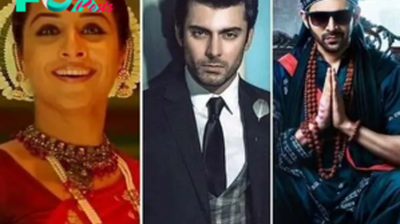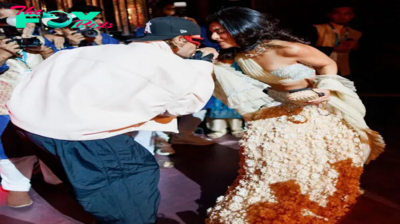Lifestyle
Artist Louise Bourgeois Returns to Rome in New Exhibit at Galleria Borghese
The French-American artist Louise Bourgeois posthumously returns to the Italian city she fell in love with.
“I immediately loved Rome. The Pantheon that I see from my window, I recognised from the Piranesis of yore – the city is a mess of every single historical period piled one atop the other right in the centre of town. Fantastic! … For the Villa Borghese, I spent the afternoon there, both in the gardens and inside. It was wonderful. It is a dream, 6 Berninis.” So wrote the sculptor Louise Bourgeois in 1967, on the occasion of her first visit to Villa Borghese, reflective of her deep appreciation of and connection to the museum’s rich artistic and historical layers. Following that seminal trip, Bourgeois (1911-2010) returned and worked in Pietrasanta and Carrara, producing several works inspired by the Borghese collection.
Which she has again now, although posthumously. The prestigious Galleria Borghese, 57 years after feeling the love, stages Louise Bourgeois: Unconscious Memories, placing 20 of her works in conversation with masterpieces from the museum’s 400-year-old collection, including Bernini, Caravaggio and Canova. It’s the first exhibition dedicated to a contemporary female artist and the first devoted to the leading 20th-century sculptor in Rome, a city that played a central role in the sculptor’s oeuvre and inspired a series of her works. Indeed, you could say Borghese’s work was never quite the same after she discovered Italy.

All of which would be music to the ears of Villa Borghese’s creator, Scipione Borghese (1577-1633), who wanted his vast collection of ancient sculpture displayed alongside the art of his time, including the masterful Baroque sculptures he’d commissioned from Bernini. Bourgeois, too, is having her moment in Italy. Tracey Emin is concurrently curating a show of Bourgeois’s work at the Museo Novocento in Florence, and there’s an exhibition of her drawings at Studio Trisorio in Naples. And this show in Rome is sponsored by Fendi.
Indeed, in the contemporary vernacular, Bourgeois’s surname alone has scaled the dizzy heights of recognition which surround the Kusamafication of Yayoi, the Murakamification of Takashi and now the Bourgeoiserie of Louise. And there’s small but lovely irony in that. Unlike in today’s helter-skelter hyper-fast art times, Louise Bourgeois was discovered comparatively late in her career, and the big showpieces for which she’s renowned – cages full of ready-mades, (or Cells as they’re known) and the gargantuan bronze Spiders all came as a result of Italy and beyond.
She once explained her trajectory thus. “Nothing protects you like anonymity. This, by the way, has been the story of my career. For many years, fortunately, my works were not sold for profit or for any other reason … I worked in peace for 40 years. The production of my work had nothing to do with the selling of it. And I remain completely unaffected by the market, whether it is positive or negative. It is a very sad thing today, and the younger people are trapped by it. They work at something only if it is successful. If it doesn’t sell, they change their style. This is terrible. This is very sad.”

Bourgeois made art because she had to, rather than being asked to. “I need to make things. The physical interaction with the medium has a curative effect. I need the physical acting out. I need to have these objects exist in relation to my body.” What she did produce is a mass of contradiction, duality and Borgeoisan body parts. And while her work may have been anonymous for long periods, she never hid from seeking to aesthetically articulate the depths to which the dark side took her. She runs the gamut from sinister, harsh, repellent and sharp to glossy, sensorial, seamless and erotic. One moment as cold and hard as the metal of her Cells, or threatening as the outsized Spider, the next as billowy and comforting as a toasted marshmallow.
Much of her work can be categorised into themes of metamorphosis, memory, and the expression of emotional and psychological states, with two recurring narratives: extolling her mother’s virtues and berating her father’s lack of them, though not his predilection for sleeping with his mistress, Sadie, who also happened to be Louise’s tutor. As such, Bourgeois’s work, more directly than most, is very much the mad, angry and violent autobiography of her life.
Jerry Gorovoy, her long-time collaborator and friend, with whom she made casts of hands and legs, quaffs prosecco in the garden at the vernissage. “She fed off trauma, her emotional state was transferred on to her pieces, and much of it came from anger and violence,” he says. Gorovoy gave up his job at Sidney Janis Gallery in New York to become her assistant/manager in the 1970s, and believes art was Bourgeois’s process for living. “Making art saved her life,” he says. “It was a form of therapy, something she needed to do. Her work is unified. There’s no real separation. What she was, what she believed in and what she felt in her work is totally unified. That’s the brilliance.”

And how. Standing in front of her first work inside the entrance hall is a monumental experience. Cell (The Last Climb) (2008) is one of the last works she produced – and inside it, tellingly, stands the spiral staircase that once belonged in her Brooklyn studio, before the building was sold off in 2005. The spiral in Bourgeois’s work is a metaphor for the endless cycles of life and its journey. Inside, 12 tiny threads linking to certain pieces form a fabric clock. And the cage itself feels like both protection and entrapment, a reference to her mother and father, and her own life. The Cell also contains floating blue spheres, espousing strong spiritual connotations. In the monumental hall, with its highest ceilings festooned with painterly Baroque splendour, the effect is iconoclastic.
Strangely, a vision of a young Vanessa Paradis perched on a swing inside a birdcage for a Chanel Coco perfume advert takes flight in our mind. Was filMMAker Jean-Paul Goude’s film L’esprit de Chanel iNFLuenced by Bourgeois? We have no idea. It’s an early clue to the effect of placing contemporary sculptures in dialogue with classical masterpieces and measuring our universal understanding of both.
“Each cell deals with a fear. Fear is pain … each cell deals with the pleasure of the voyeur, the thrill of looking and being looked at,” Bourgeois said. We approach the slender Cell XX (Portrait) and later on Passage Dangereux, Bourgeois’s largest Cell, which encapsulates the journey of a little girl becoming a mature woman. The former, with its silent exchange between two heads, emphasises emotional expression and psychological depth over status and social identity. “I am interested in the portraiture of a relationship,” she said. “How a relationship can be twisted, the effect people have on one another.”

By creating her own architecture in Cells, Bourgeois developed a self-contained form that allowed her to stage complex orchestrations of motifs and symbols merging past and present – to be seen, shared, experienced and preserved, much as Galleria Borghese was for Scipione Borghese.
Jambes Enlacées (1990) is a quirky piece which at first I missed, thinking it a Renaissance work, set as it is, directly juxtaposed with Antonio Canova’s seductive portrayal of Pauline Borghese as Venus. Both pieces seem to use the same pink marble. And do. But Bourgeois’s seemingly naturalistic body, casts the legs of Gorovoy, transforming the male figure into the muse and reversing the traditional depiction of women in this role. It’s quite the eye-opener.

Explains curator Cloé Perrone, who conceived the Borghese/Bourgeois exhibition. “The sculpture ingeniously blends traditional elements with modern reinterpretations, crafting an aesthetic so classical that viewers might even overlook its contemporary artistry. Rendered in pink marble, the sculpture’s carnal quality subverts the purity associated with the material. The cramping of the toe, a subtle yet expressive detail, evokes the psychoanalytic concept of ‘body language’, where physical tension is seen as a metaphor for psychic life.”
The marble sculpture Topiary (2005) delicately captures the ephemeral moment of transition from girlhood to womanhood, echoing themes of metamorphosis and botanical imagery found in classic mythology. Here, a serene figure’s upper torso and head are replaced by a multi-layered crown of Petals, symbolising the blossoming of life and the emergence of a new identity. The feminine identity takes a phallic form, introducing the “reversibility of perspective” that emphasises the dynamic interplay of gender perception. The sculpture mirrors the transformation of Daphne into a laurel tree in as depicted in Bernini’s Apollo and Daphne sculpture, which stands opposite. I’m reminded of contemporary Polish painter Ewa Juszkiewicz, whose female figures invoke classical and historical artworks, yet are undermined with subversive, inhuman content.

Janus Fleuri (1968) plays with the idea of binaries, male and female. This self-portrait in bronze features two phalluses joined back-to-back pointing in opposite directions. The central seam, where the two forms meet, mirrors female genitalia, emphasising the interchangeability and symmetry of human anatomy. Suspended from a single point, the sculpture spins, inviting multiple perspectives.
Opposite is Spiral Woman (1984), a reminder of Bourgeois’s adeptness at physicalising anxiety and turbulent psychological states. It mirrors the constant interplay between change and constancy in our lives. Here’s Bourgeois on spiral motifs in her work. “The spiral is important to me. It is a twist. As a child, after washing tapestries in the river, I would turn and twist and ring them … Later I would dream of my father’s mistress [that’s Sadie]. I would do it in my dreams by ringing her neck. The spiral – I love the spiral – it represents control and freedom.” And death.
And for a denouement, we pass The Welcoming Hands, again cast from her own and Gorovoy’s in various poses, as a preview to the main event.

Spider (1996). Big and bronze, she stands, in her trophy moment; the coMMAnding yet protective spirit of Bourgeois’s mother, a weaver and tapestry restorer. “My best friend was my mother and she was deliberate, clever, patient, soothing, reasonable, dainty, subtle, indispensable, neat and as useful as a spider … I shall never tire of representing her,” wrote Bourgeois.
As happens in the presence of this disturbingly stylish arachnid, we sense uneasy threatening tension; she feels predatory, especially against the static nature of the garden. Yet she also espouses maternal instincts intertwined with a profound yearning for liberty. And she looks oh-so classical. If only Gian Lorenzo Bernini and Bourgeois were with us, for him to reinterpret her bronze spider in pink marble for Scipione Borghese.
I immediately loved Rome.
-

 Lifestyle32m ago
Lifestyle32m agoPsychologists Explain Things We All See in Dreams, and It’s Better Not to Ignore Them
-

 Lifestyle47m ago
Lifestyle47m agoI Became a Millionaire after My Sons Kicked Me Out
-

 Lifestyle48m ago
Lifestyle48m agoMy Pregnant Wife Started Returning Home Late at Night – I Lost Control When I Found Out the Reason
-

 Lifestyle1h ago
Lifestyle1h agoChloe Dunst’s happy journey: 28-year-old mother of 9 children in Australia finds happiness in watching her children grow up even though it will be difficult to allocate time to take care of her family
-

 Lifestyle1h ago
Lifestyle1h agoThe adorable baby’s enchanting charm is being widely shared on social networks as it captivates millions of hearts even while the angels are sleeping.
-

 Lifestyle1h ago
Lifestyle1h agoUn niño se detiene frente a unos perros callejeros sin saber que estaban grabándolo.sena
-

 Lifestyle1h ago
Lifestyle1h agoIs Fawad Khan making a Bollywood comeback with 'Bhool Bhulaiyaa 3' cameo?
-

 Lifestyle1h ago
Lifestyle1h agoJack Black cancels Tenacious D tour after bandmate's Trump joke





















